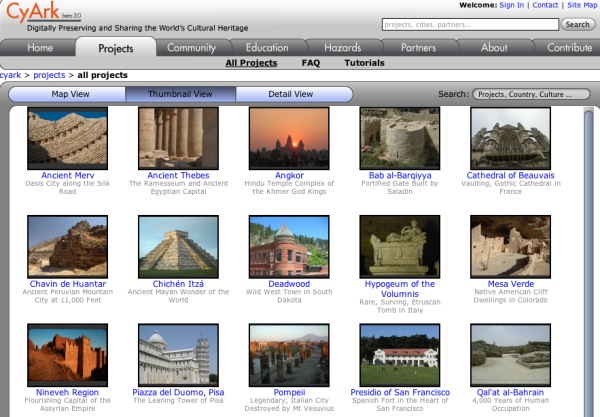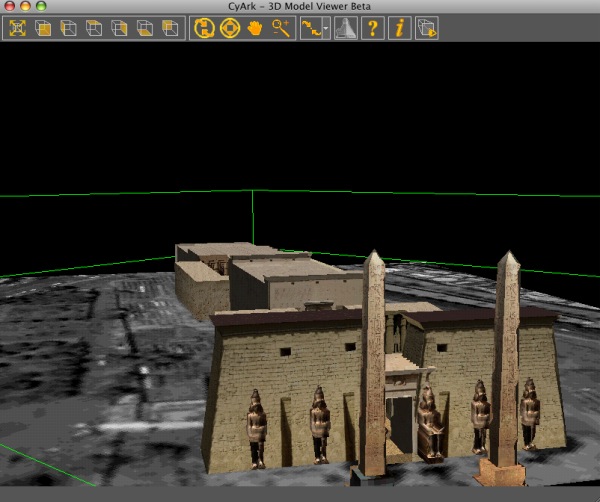Enviado por Gonzonet a través de Google Reader:
 Twitter has become a nationwide phenomenon, and like any phenom, all the Twitter talk grows quickly tiresome. But despite what you may think, Twitter isn't just for narcissists; it's actually insanely useful.
Twitter has become a nationwide phenomenon, and like any phenom, all the Twitter talk grows quickly tiresome. But despite what you may think, Twitter isn't just for narcissists; it's actually insanely useful.
So let's assume that you already know about the navel-gazing uses of Twitter—the aspects of Twitter that most people criticize when they complain about the site. Discounting Twitter altogether because you think it's ridiculous that people tweet about what they had for breakfast is like claiming that email is useless because of forward chains. It's a mistake, and you'd be missing out on a great tool if you let that put you off Twitter completely.
Twitter is as useful as you make it. In fact, Twitter does several very worthwhile things better than any other tool.
1. Instant, Real-Time Search Results
 Search is hands down the most useful feature of Twitter—whether or not you actually participate by posting anything to the site. Consider, for example, a very trivial example: I live on the West coast, so when the American Idol results show ends every Wednesday on the East coast, it's only 7pm here. I could wait two hours, then suffer through another hour of the Wednesday night, up-with-people variety show, but I really just want to know who was voted off. News sites move too slowly, and at one point blogs had aimed to fill this instant-answers void, but guess what: When you want to find out who was voted off Idol as soon as the results are available, Twitter is the quickest and easiest way to get this answer. Try it sometime. Within seconds of the announcement on Idol, Twitter fills with hundreds of posts answering this question for me.
Search is hands down the most useful feature of Twitter—whether or not you actually participate by posting anything to the site. Consider, for example, a very trivial example: I live on the West coast, so when the American Idol results show ends every Wednesday on the East coast, it's only 7pm here. I could wait two hours, then suffer through another hour of the Wednesday night, up-with-people variety show, but I really just want to know who was voted off. News sites move too slowly, and at one point blogs had aimed to fill this instant-answers void, but guess what: When you want to find out who was voted off Idol as soon as the results are available, Twitter is the quickest and easiest way to get this answer. Try it sometime. Within seconds of the announcement on Idol, Twitter fills with hundreds of posts answering this question for me.
The real-time search applies to so much more. If the signal on my cell phone goes out, I check Twitter to see if there's some sort of AT&T outage in my area. If I want to know what people are saying about something important to me, I hit up Twitter. What you get is like a centralized, searchable, real-time comment-thread for everything. Yes, like all comment threads, you'll find a good amount of crap. But that doesn't render the entire thread worthless. Bookmark Twitter Search now and use it next time Google or your favorite blog search engine fails you.
2. Monitoring Something You Care About
 Virtually every company has a Twitter account these days, which means if there's a product you really care about, following them on Twitter is often the easiest way to stay up to date with the latest developments. But more often than not (in the context of Twitter, at least), the thing we care about most is ourselves. We've already shown you how to create an ego search to monitor what's being said about you on the web, but now Twitter is another must-use tool for getting your ego fix.
Virtually every company has a Twitter account these days, which means if there's a product you really care about, following them on Twitter is often the easiest way to stay up to date with the latest developments. But more often than not (in the context of Twitter, at least), the thing we care about most is ourselves. We've already shown you how to create an ego search to monitor what's being said about you on the web, but now Twitter is another must-use tool for getting your ego fix.
Still, even if you're not an ego-maniac, surely there's something that you care about that you could monitor on Twitter. Do yourself a favor and download one of the free desktop Twitter clients to help you create persistent Twitter searches so you can keep track of whatever your want without always hitting up the main Twitter search page. We'd recommend checking out TweetDeck or Seesmic Desktop.
3. News Updates
 We've been using newsreaders to subscribe to RSS feeds for years now, but newsreaders still haven't completely caught on with the world at large. It seems less manageable to us, but many people are perfectly happy using Twitter as a tool to keep up with the latest news—which is partly why CNN has over 1 million followers. Likewise, re-tweeting (the process of copying and re-posting someone else's tweet) spreads news like wildfire—so breaking news can reach you on Twitter a million times faster than through any of the old methods. (For what it's worth, here at Lifehacker we have our own Twitter feed that pushes out all of our top stories.)
We've been using newsreaders to subscribe to RSS feeds for years now, but newsreaders still haven't completely caught on with the world at large. It seems less manageable to us, but many people are perfectly happy using Twitter as a tool to keep up with the latest news—which is partly why CNN has over 1 million followers. Likewise, re-tweeting (the process of copying and re-posting someone else's tweet) spreads news like wildfire—so breaking news can reach you on Twitter a million times faster than through any of the old methods. (For what it's worth, here at Lifehacker we have our own Twitter feed that pushes out all of our top stories.)
4. Instant Communication with Friends
 This is closer to what people think about when they think Twitter. But, as I said above, Twitter communication doesn't have to be a cesspool of "what I ate this morning" and "just flushed the toilet." You can choose whose updates you want to be notified of and how you get those updates. Upshot: If you and your pals use Twitter well, it can be a fantastic communication tool. If not, of course it's useless—but that's not really Twitter's fault. Also, if privacy is a concern, you can always protect your updates.
This is closer to what people think about when they think Twitter. But, as I said above, Twitter communication doesn't have to be a cesspool of "what I ate this morning" and "just flushed the toilet." You can choose whose updates you want to be notified of and how you get those updates. Upshot: If you and your pals use Twitter well, it can be a fantastic communication tool. If not, of course it's useless—but that's not really Twitter's fault. Also, if privacy is a concern, you can always protect your updates.
5. Twitter as a Productivity Command Line
 Whether you want to add a new event to Google Calendar, a new to-do to Remember the Milk, or a new note to Evernote, you can do it all via Twitter. It took us a while to warm up to Twitter from a productivity angle, but this kind of integration made us admit that Twitter may yet boost your productivity, too.
Whether you want to add a new event to Google Calendar, a new to-do to Remember the Milk, or a new note to Evernote, you can do it all via Twitter. It took us a while to warm up to Twitter from a productivity angle, but this kind of integration made us admit that Twitter may yet boost your productivity, too.
6. Ask Questions, Get Answers
 Provided you have enough followers (with enough knowledge), Twitter is also a powerful place to ask questions and get answers. Before I started writing this post, for example, I asked my followers what they think Twitter's best uses are—the answers to which helped inform this entire post.
Provided you have enough followers (with enough knowledge), Twitter is also a powerful place to ask questions and get answers. Before I started writing this post, for example, I asked my followers what they think Twitter's best uses are—the answers to which helped inform this entire post.
We certainly haven't exhausted all the options, but hopefully this gives you a more balanced look at how Twitter can be useful to you. Of all of these options, Twitter search is far and away the most powerful feature, and one we'd recommend you start using. If you've got something worthwhile you use Twitter for that we didn't cover, let's hear about it in the comments.
Cosas que puedes hacer desde aquí:
- Subscribirse a Lifehacker con Google Reader
- Empieza a utilizar Google Reader para mantenerte al día fácilmente de todos tus sitios favoritos.





.png)




